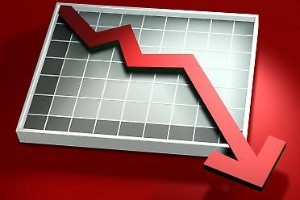 The US economy may be much weaker than economists have initially predicted and the most recent evidence for this fear is a serious of manufacturing reports from different region of the US which all came in much weaker than economist have expected. The weather has been blamed for this which is not the best way to explain economic weakness.
The US economy may be much weaker than economists have initially predicted and the most recent evidence for this fear is a serious of manufacturing reports from different region of the US which all came in much weaker than economist have expected. The weather has been blamed for this which is not the best way to explain economic weakness.
Regardless if the weather had an impact, orders as well as employment components of the reports all point to weakness ahead and several reports are either showing contraction or are really close to it. The US issued two non-farm payroll reports, the one for December and January, which both came in much weaker than expected. Heightening concerns for a slow US economy was evident in January’s report where weather was a non-factor.
Here are the regional manufacturing reports as well as the ISM report which disappointed in February so far:
- ISM Manufacturing Index – The ISM was reported at 51.3 for January which missed expectation
 for a reading of 56.0 while December was revised lower to 56.5. This covered January and showed that the manufacturing sector was much weaker than expected.
for a reading of 56.0 while December was revised lower to 56.5. This covered January and showed that the manufacturing sector was much weaker than expected. - Empire Manufacturing Index – This report disappointed with a reading of 4.48 while economists expected a reading of 9.0. February’s figure represents a sharp slowdown from January’s 12.51.
- Philadelphia Manufacturing Index – This index for February was expected to be reported at 8.0 which would have been a minor slowdown from January’s 9.4. The actual report showed a -6.3 which points towards a sharp contraction in the Philadelphia Fed region.
- Chicago National Activity Index – This report covered January and came in twice as bad as economists expected. Economists called for this report to show a -0.20 figure while the actual report showed a -0.39. December’s gain was revised lower to show a -0.03 figure.
- Dallas Manufacturing Index – This report was the latest disappointment as the February report barely escaped contraction and was reported at 0.3. Economists expected the report to show a 3.0 figure which would have been a moderate slowdown from January’s 3.8.
The US Dollar is likely to experience downward pressure as economic disappointments will offer forex traders more reasons to sell the US Dollar against major currency crosses. The EURUSD could eclipse the 1.4000 level this year should this trend resume while the GBPUSD may rally past the 1.7500 mark by the end of 2014.







